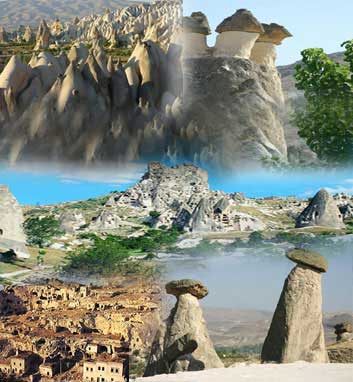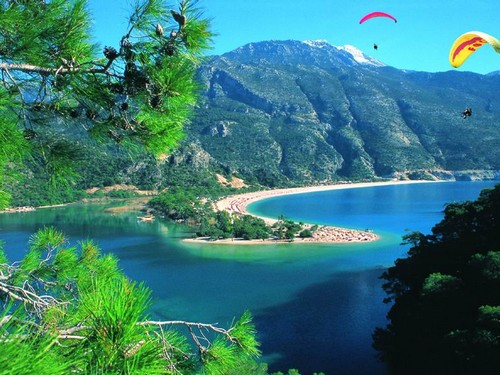
Istanbul is worth visiting for the shopping alone. And the Kapali Carsi, or "Covered Bazaar", in the old city is the logical place to start. This labyrinth of streets and passages houses more than 4000 shops. The names recall the days when each trade had its own quarter" Goldsmiths' Street", "Carpet Sellers' street", "The Street of skullcap Makers". Sit down for tea with some of the sellers and let them charm you into buying a few souvenirs you never realized you wanted.

Chances are you'll catch your first glimpse of Pamukalle (translated as "Cotton Castle") on a postcard. Calcium-oxide-rich waters paint this Caldag hillside white, creating a series of Gaudi-like dripping terraces. Try to view this stunning geological formation early without thousands of people crawling all over it and turning the white surface dark with foot scum.

One of Istanbul's big draws, this expensive fifteenth-century estate served as the centre for the Ottoman empire for four centuries and is difficult for most travelers to miss. Among the maze of rooms, you'll find inner courtyards, a throne room, a circumcision room and a harem.

When the Ottomans moved on from Topkapi Palace in 1853, they decided to build on the Asian side of Bosphorus. It doesn't look as magnificent from the outside, but the opulence within will put even the most decorated Las Vegas lobby to shame. Its also where Kemal Ataturk (Turkey's first president) died on November 10, 1938 - if you want to know when, just look at the clocks, which have been set to his exact time of death )9.05am).

If you're looking for a smurf-coloured mosque, forget it - it's the blue tilework on the insides that gives this mosque its name. if you want to walk barefoot across the countless handwoven rugs while marveling at the serenity and architecture, you won't be disappointed by this seventeenth- century Mehmet Aga creation, known locally as the "Sultanahmet Camii".

Walking around the dry stacks of cut stone of Ephesus, it's hard to imagine that it once sat on the Aegean coast, now 8kn away. And even harder to imagine the Temple of Artemis in full glory, when it was once a Wonder of the World. The site as a whole, however, has been impressively preserved.

Nothing scrapes off the travel grime quite like a trip to a hammam. These enormous marble steam rooms, often fitted with hot baths, showers and cooling-down chambers, can be found all over Turkey. Let a masseuse scrub you with an abrasive mitt and you'll see chewing-gum0sized wads of dead skin tumbling off your body. Then he'll pound your muscles to a pulp, crack your joints, and you'll emerge feeling like a boneless chicken, in a good way, of course.

Literally translated, Yerebatan Saray is the "Sunken Palace". It's Istanbul's largest underground cistern, naturally air conditioned and renovated for public access. This one-time plumber's nightmare has been atmospherically spruced up - the water dripping from the ceiling is now accompanied by pulsing lights and creepy music.

Head into the Swiss-cheese-like region of Cappadocia and you'll find a mind-boggling assortment of caves. Some of these Hitler's dwellings (often called "Fairy Chimneys") have been converted into damp youth hostels that offer a nice respite from the heat. You'll also find underground cities and rock churches.

Nazar Boncuk, or "Evil Eye" charms as they're commonly known, are cheap and come in many shapes and sizes: earrings, necklaces, hatpins and so on. The little blue eye is an old superstition to ward off misfortune. Wear one and you'll like get a smile from the locals. It's a nice way to let them know you are interested in more than snapping pictures of old ladies making carpets. Something they'll enjoy pointing out while they sell you a teaset, anyway.




